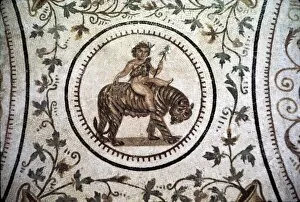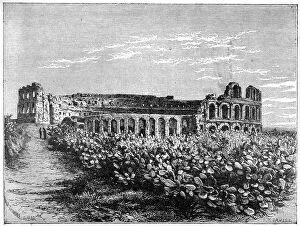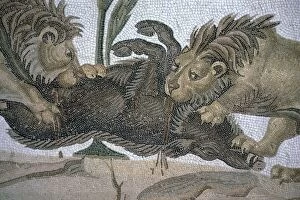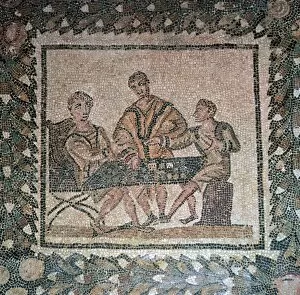Mahdia Governorate Collection
Mahdia Governorate, located in Tunisia, is a treasure trove of ancient Roman history
All Professionally Made to Order for Quick Shipping
Mahdia Governorate, located in Tunisia, is a treasure trove of ancient Roman history. The region boasts stunning archaeological sites that transport visitors back to the glory days of the Roman Empire. One such site is the El Djem Amphitheatre, a magnificent structure dating back to the 2nd century. Its grandeur is captured in a Roman mosaic detail depicting Infant Dionysus Riding on a Tiger. This intricate artwork showcases the skill and artistry of ancient craftsmen. The El Jenn Amphitheatre, immortalized by artist John Sands in 1841, stands as a testament to human ingenuity and architectural brilliance. Its towering arches and majestic presence evoke awe and wonder even today. F Meaulle's depiction of this amphitheatre in c1890 further highlights its timeless beauty. The carefully crafted details capture every aspect of this remarkable structure, transporting viewers into its rich history. Roman mosaics found within Mahdia Governorate offer glimpses into daily life during ancient times. A mosaic showing lions killing a boar from the 2nd century depicts scenes from nature intertwined with human drama—a true reflection of Roman society's fascination with both power and beauty. The exterior and interior views of Roman Colosseums from the 3rd century provide insight into their immense scale and impressive architecture. These structures were not only venues for gladiatorial combat but also symbols of Rome's dominance over conquered lands. Another captivating mosaic discovered in Mahdia Governorate portrays the nine Muses—goddesses who inspired creativity—in all their splendor. This masterpiece reflects Romans' appreciation for arts and culture during this period. The Arches of a Roman Colosseum depicted from the same era showcase meticulous craftsmanship that has stood against time's relentless march for centuries on end. A floor mosaic showcasing Spring transports us to an idyllic world bursting with vibrant colors—a reminder that even amidst warlike spectacles, the Romans celebrated the beauty of nature.














